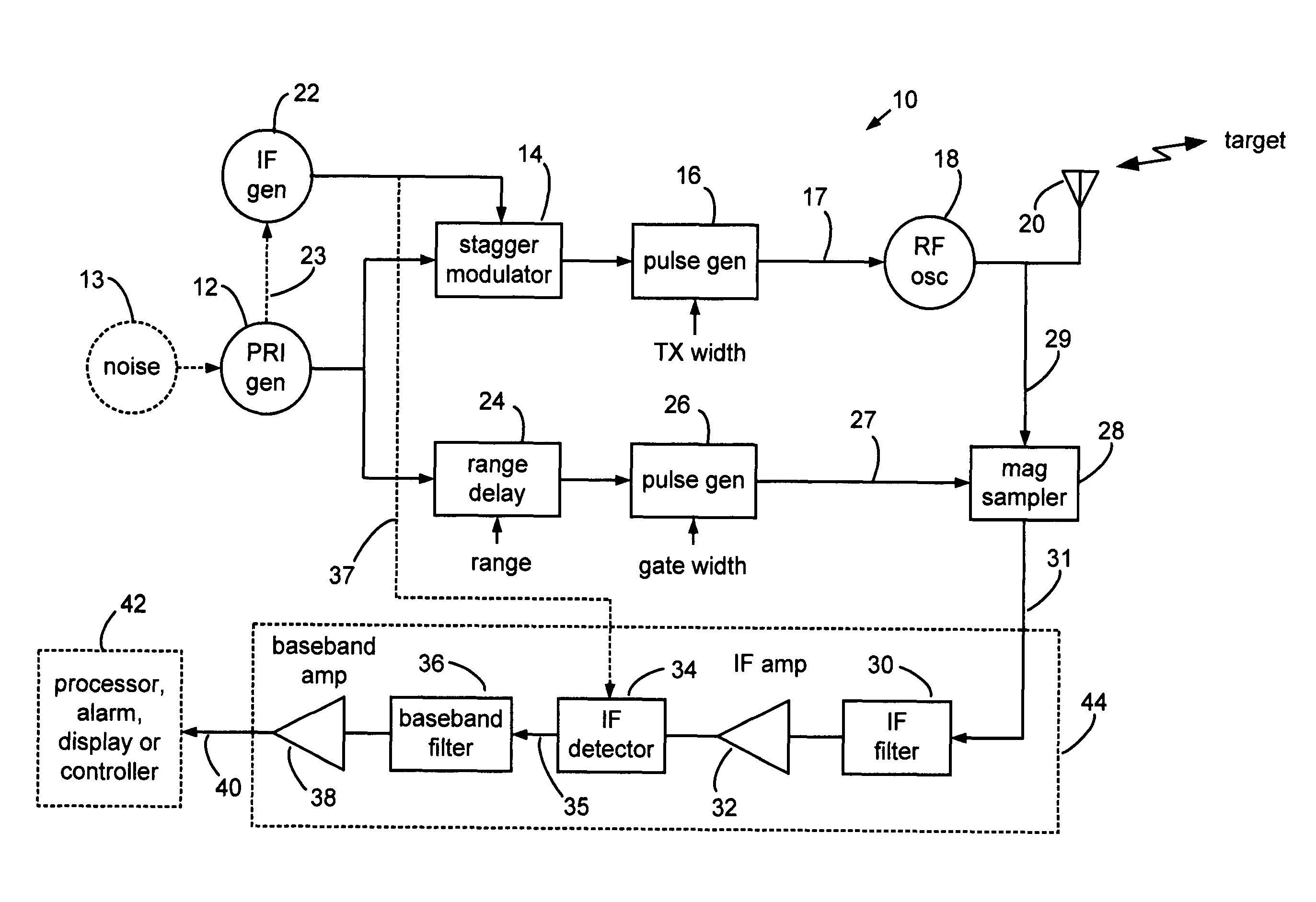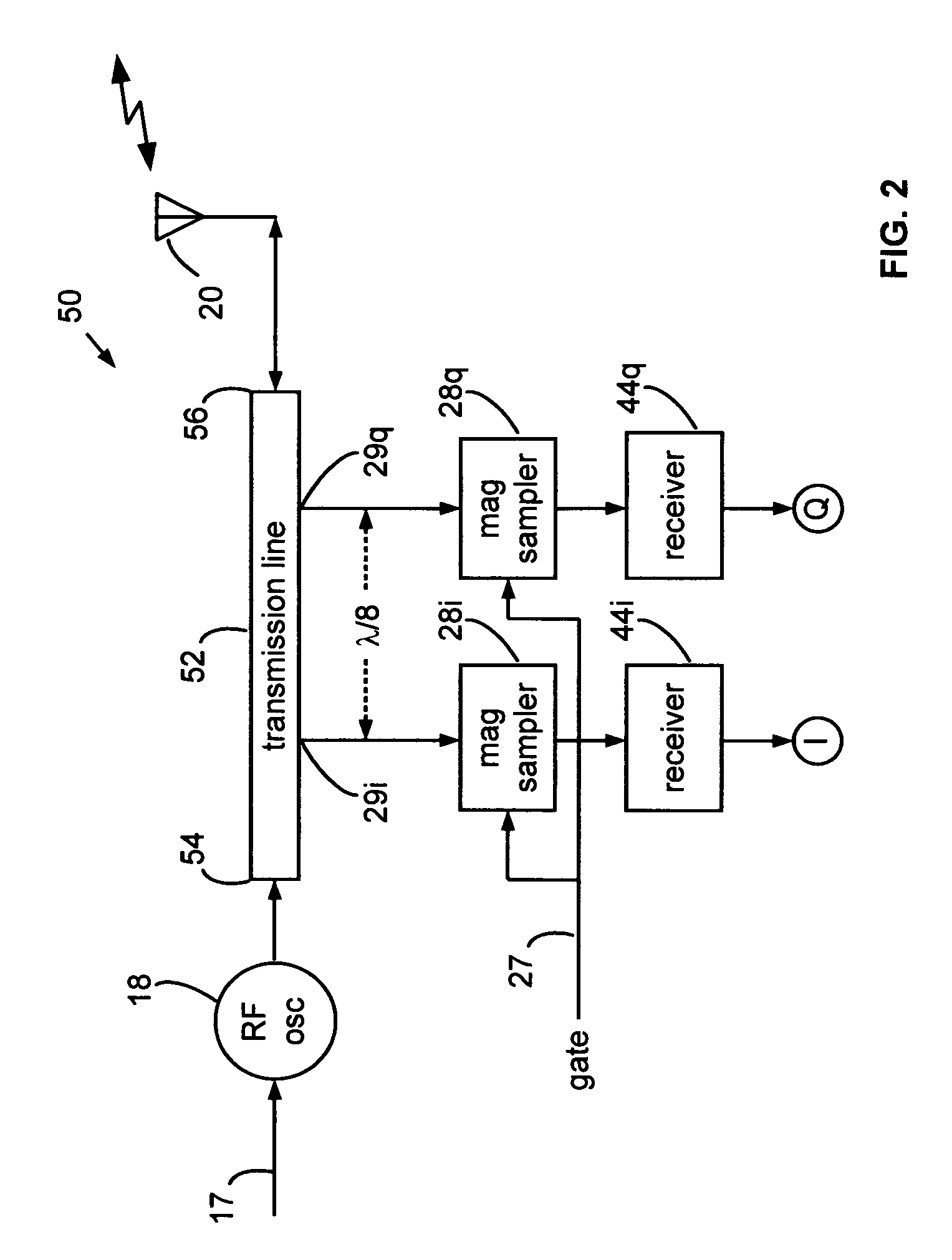Range gated holographic radar
a holographic radar and range gate technology, applied in the field of radars, can solve the problems of inability to use, severe restrictions in the operation of high-bandwidth radars, and limited ism bandwidth, and achieve the effect of low noise range and high spatial resolution
- Summary
- Abstract
- Description
- Claims
- Application Information
AI Technical Summary
Benefits of technology
Problems solved by technology
Method used
Image
Examples
Embodiment Construction
[0031]A detailed description of the present invention is provided below with reference to the figures. While illustrative component values and circuit parameters are given, other embodiments can be constructed with other component values and circuit parameters.
General Description
[0032]The present invention overcomes the limitations of prior art holographic radar by introducing a range gate to limit response to a specific downrange region. Consequently, cleaner, more clutter-free radar holograms of an imaged surface can be obtained, particularly when penetrating materials to image interior image planes, or slices. Range-gating also enables stacked hologram technology, where multiple imaged surfaces can be stacked in the downrange direction. Holograms of interior slices of a solid object can include slices of a tree, interior slices of human organs, and depth-wise slices from ground penetrating holographic radar, such as holographic images of buried tombstones.
[0033]The present invent...
PUM
 Login to View More
Login to View More Abstract
Description
Claims
Application Information
 Login to View More
Login to View More - R&D
- Intellectual Property
- Life Sciences
- Materials
- Tech Scout
- Unparalleled Data Quality
- Higher Quality Content
- 60% Fewer Hallucinations
Browse by: Latest US Patents, China's latest patents, Technical Efficacy Thesaurus, Application Domain, Technology Topic, Popular Technical Reports.
© 2025 PatSnap. All rights reserved.Legal|Privacy policy|Modern Slavery Act Transparency Statement|Sitemap|About US| Contact US: help@patsnap.com



